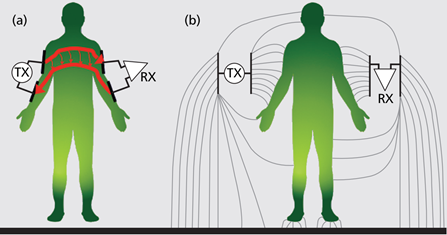MSc thesis project proposal
[2020] Body-coupled communication to enhance IMD security
Project outside the university
ErasmusMC, Dept. Neuroscience [M. Ali Siddiqi]Topic:
Implantable Medical Devices (IMDs), such as cardiac pacemakers and neurostimulators, are autonomous, battery-powered devices with extremely high safety and reliability constraints. They are typically designed to operate for a long period of time (up to 5-10 years) while implanted in the human body. To support and enhance the treatment capabilities of these devices, modern IMDs are equipped with a wireless transceiver, which can communicate with an external reader/programmer. However, these wireless capabilities make it possible for malicious entities to communicate with the device without the knowledge or cooperation of the victim. This can lead to serious issues, e.g., private-data theft, physical harm etc. In order to secure the communication channel between the IMD and the reader lightweight block ciphers can be employed. However, this requires both the IMD and the reader to share the same symmetric key. This thesis will investigate the use of body-coupled communication (BCC) as on out-of-band channel to securely transfer this key from IMD to the reader (or vice versa). BCC is generally of two types:
Galvanic Coupling: Two electrodes are attached to the body to transmit the signal, and the signal is considered as being electromagnetic waves.
Capacitive Coupling: Here the return path is formed by electrical coupling between the electrodes through an external ground through the air, while the signal transmits through the body from transmitter to receiver.
Galvanic coupling is a more suitable choice since it is more localized and has less electromagnetic leakage compared to capacitive coupling. This makes it difficult for an attacker to eavesdrop.
Assignment
1. Design small form-factor transceiver on a PCB with two leads for communication using off-the-shelf FM transceivers or encoders and mixers, incorporating the galvanic coupling type BCC. The small form factor makes it easy to test on a real human. Moreover, the transceiver should be able to fit in a standard IMD.
2. Evaluate the quality of BCC communication (BER etc.) in relation to bit rates. The transfer of data (which is the cipher key in this case) should not take too long to complete.
3. Measure the leakage of BCC communication to verify the suitability for key exchange.
Requirements
The student should have a strong background in analog circuit and PCB design.
Contact
dr.ir. Christos Strydis
Bioelectronics Group
Department of Microelectronics
Last modified: 2025-02-12
